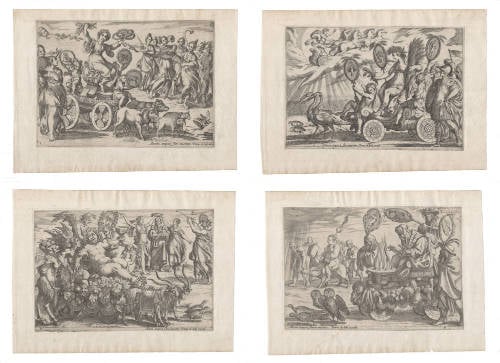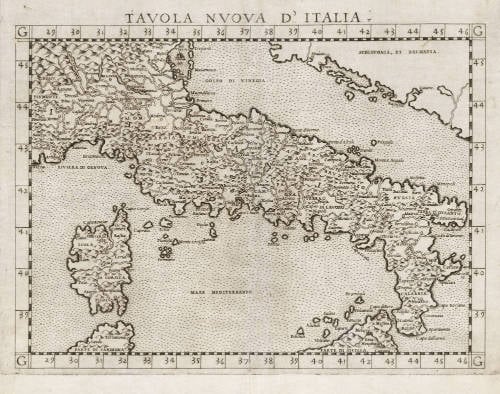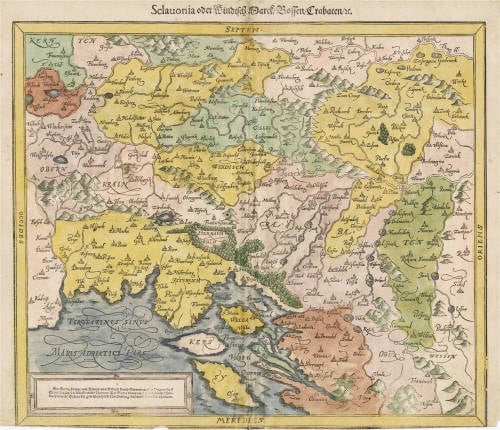Leen Helmink Antique Maps
Allegories of the four seasons by Antonio Tempesta
The item below has been sold, but if you enter your email address we will notify you in case we have another example that is not yet listed or as soon as we receive another example.
Stock number: 19073
Zoom ImageCartographer(s)
Antonio Tempesta (biography)
Title
[ Untitled - the four seasons ]
First Published
Rome, 1592
This Edition
Antwerp, 1613-1618
Size
14.7 x 21.3 cms
Technique
Condition
excellent
Price
This Item is Sold
Description
Complete set of four copperplate prints in reverse after the 1592 etchings of Antonio Tempesta. The unrecorded set here was etched and published ca 1613-1618 in Antwerp by Pieter de Jode I (1573-1634).
The allegories were used by Joan Blaeu on his 1662 Atlas Major map of the world.
The four seasons were a popular allegorical motif in Renaissance graphic art, often used on maps of the world, expressing the need of mankind to establish order in the world.
The allegories here have been etched by after a series of master print etchings by Antonio Tempesta (1573-1634).
Spring is represented by a young girl holding flowers, riding a chariot that is drawn by baby calves and lambs, typically born in spring.
Next is summer, a woman (probably Demeter, the goddess of harvest and agriculture), holding wheat and riding a chariot drawn by storks and doves. Storks as the symbol of birth and new life, doves for love.
Autumn shows the triumph of Bacchus, or Dionysus, the god of grape-harvest, winemaking and wine, and of fertility. He is riding a chariot drawn by goats and doves. Goats were a symbol of fertility and goat skins were used for wine bottles when travelling. Doves the symbol of love.
Winter is last, allegorically depicted by an old man warming his hands on a brazier set on a chariot drawn by owls and peacocks, symbols of wisdom and guidance.
A great example of the renaissance cross-pollination between Flanders and Italy. References: in reverse after Bartsch 804-807. No references found of this particular set. Pieter de Jode I published other etchings after Tempesta in Antwerp ca 1613-1618.
Literature: in reverse after Bartsch 804-807. No references found of this particular set.
Condition
In excellent condition. Good dark/grey impressions printed on thin laid paper with narrow margins. Mounted on another laid paper. With a watermark. Very rare, no other examples are recorded.
Antonio Tempesta (1555-1530)
Antonio Tempesta, also called il Tempestino (1555 – 5 August 1630), was an Italian painter and engraver, whose art acted as a point of connection between Baroque Rome and the culture of Antwerp.
He was born and trained in Florence and painted in a variety of styles, influenced to some degree by "Counter-Maniera" or Counter-Mannerism. He enrolled in the Florentine Accademia delle Arti del Disegno in 1576. He was a pupil of Santi di Tito, then of the Flemish painter Joannes Stradanus. He was part of the large team of artists working under Giorgio Vasari on the interior decoration of the Palazzo Vecchio in Florence.
He relocated to Rome, where he associated with artists from the Habsburg Netherlands, which may have led to his facility with landscape painting.
(Wikipedia)






